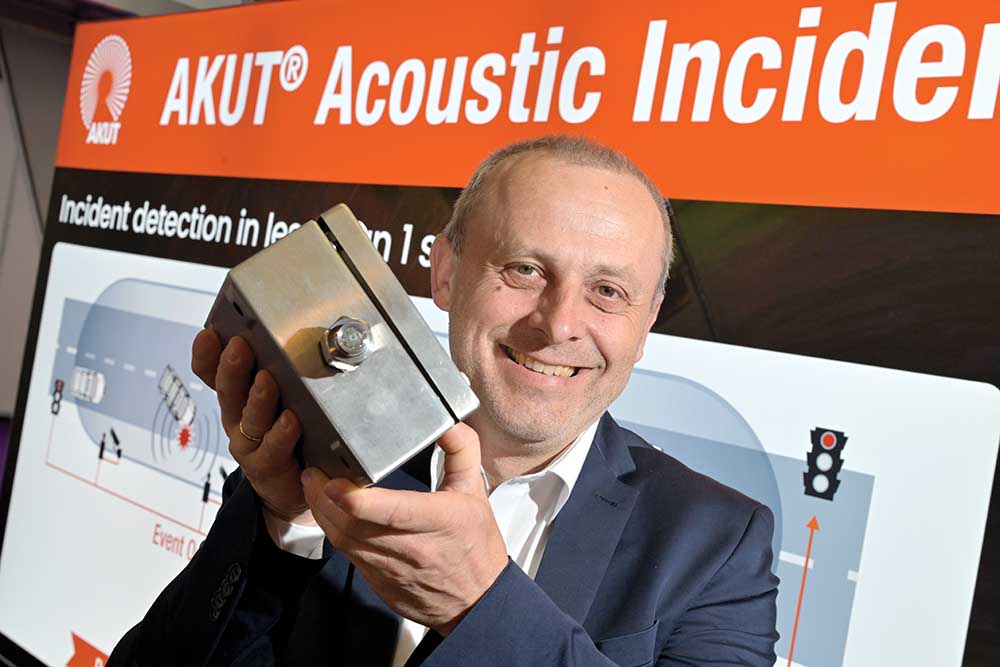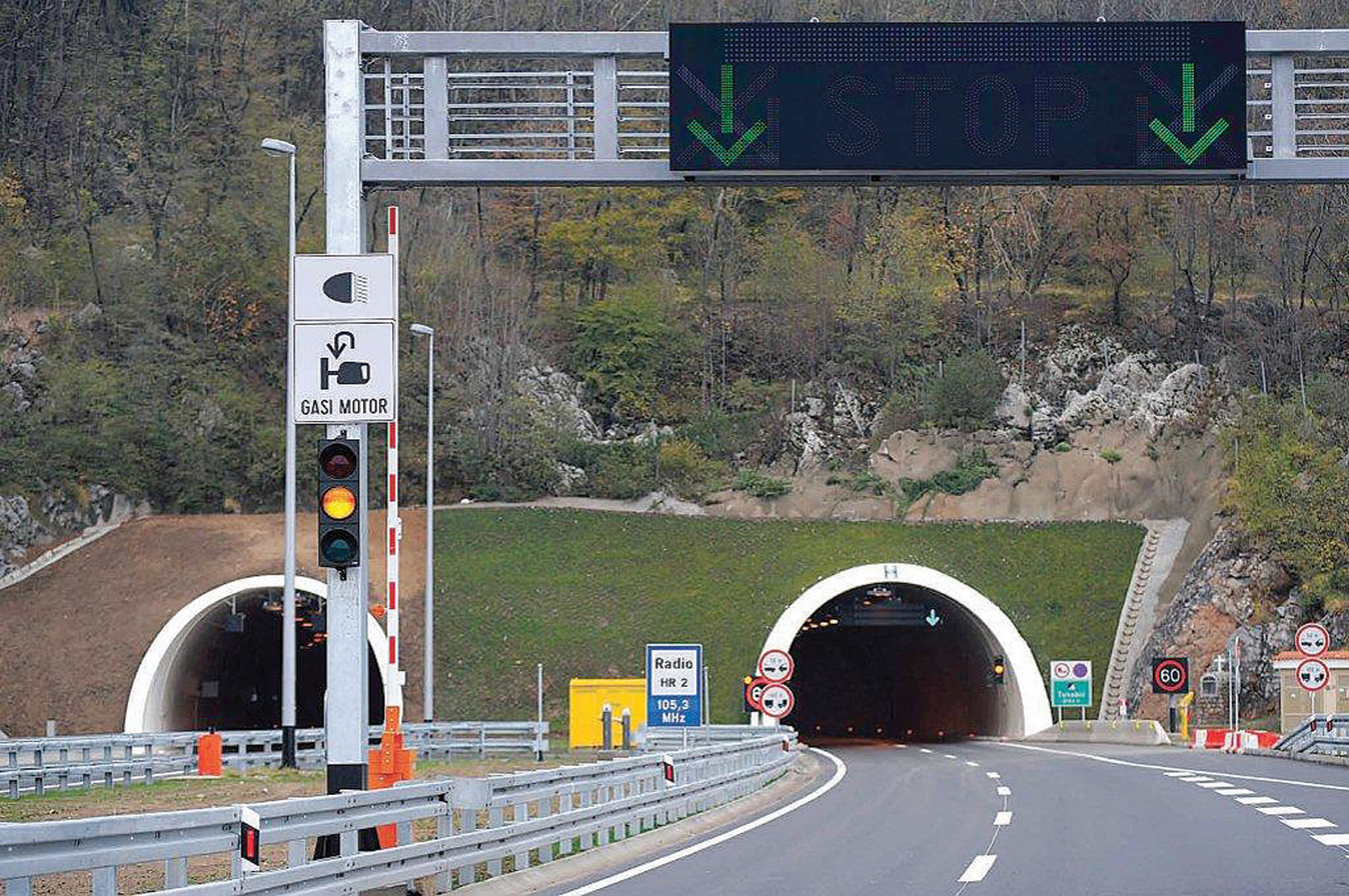
Blueprints for the safer road tunnels of the future are emerging fast as European operators invest in technologies to enhance travellers’ prospects of surviving an accident. Central to modern emergency planning is the principle that, following an incident, drivers should be enabled to rescue themselves and their passengers with the aid of prompt and correct identification and communication of the hazard.
Roles for cooperative ITS (C-ITS) are highlighted in a set of detailed recommendations from Swedish research institute Rise, which was co-financed by
Due for completion in 2024, the €2.54bn (US$2.84bn) link will be one of the world’s longest road tunnels, carrying up to 140,000 vehicles a day around the west of the fast-growing Swedish capital. The result has been growing pressure on the city’s existing eastern bypass route, which is now carrying twice the volume of traffic for which it was designed.
The Swedish capital is built on 14 islands, which are connected by 57 bridges and have historically made north-south travel arduous. The new link will pass at three points under Lake Mäleren, the country’s third largest freshwater expanse.
Having analysed the project, Rise has identified ways of better communicating critical data both from and to road users, who – it stresses - may differ substantially in their informational needs and reactions. Multisensory alerts, for example, will be needed to keep the hard of hearing fully informed.
Stressing the importance of accurate incident location for both operators and users, Rise envisages remedying the lack of available GPS signals with the results of ‘promising developments’ in wireless and future cellular networks.
It sees much of the overall communications development needed centring on the scope of the 802.11p approved amendment to the US
For the benefit of bus drivers and their passengers, who tend to feel uneasy when travelling through long tunnels, Rise recommends installing dynamic bus lanes. It notes the ‘innovative approach’ of the intermittent lane, divided into sections where the status can be changed in response to demand in order to minimise the impact on general traffic.
In one version, private vehicles already travelling in a section when it was switched, would be able to continue. In another, trialled in a recent Portuguese research project, private vehicles have to exit the lane as soon as its status is changed – necessitating reliable vehicle identification and V2I links, including those needed to ensure correct information on, for example, variable message signs. The system could also accommodate trucks carrying hazardous loads.
Trafikverket project manager Leif Eklöf told ITS International that tendering documentation for the procurement of the technical installations currently being specified is due for issue this year.
Austrian acoustics
Austrian motorway operator
The machine-learning core of the system models these as the baseline for detecting deviations – vehicles colliding with each other or with the tunnel structure, tyres squealing and bursting, horns, doors banging or stressed voices – as picked up by microphones These are installed at 100m-150m intervals, on tunnel walls or the connection boxes supplying power to co-located video cameras.
The boxes are also equipped to amplify the abnormal sounds and convert them into digital audio signals, for transmission via optical fibre or copper cable to a control centre. An analysis computer then classifies them into pre-determined categories - taking advantage of the fact that each serious incident typically generates its own characteristic auditory footprint - and triggers an alarm in less than a second.
Audio alerts are normally accompanied by the display of real-time video images captured by the activation of the nearest camera to the incident. The system integrates the outputs to enable a decision on the most effective response in terms of aid to victims and warnings to approaching motorists.
They can also hold conversations with stranded travellers, talking to them via public address systems (most major tunnels have now installed versions designed for greater intelligibility) or vehicle radios, which operators typically advise drivers to tune into during tunnel transits. Staff can pick up people’s questions via the microphones and broadcast answers that will guide and reassure them.
The system will also automatically activate tunnel stop lights and warn several minutes-worth of oncoming traffic from entering. The analysis computer is connected to a ring buffer, which stores the data from all the microphones for a defined period for future examination.
The microphones are manufactured for resistance to dirt, corrosion and the effects of tunnel jet washing. Asfinag expects to have equipped 56 tunnels across its 2183km network by 2022.
Outside Austria, Joanneum Research is working with
Mont Blanc
Logos is the new €4 million (US$4.8 million) centralised technical management system for security equipment installed in the 11.6km single-bore, two-lane Mont Blanc Tunnel. Built to hold 36 times more information than its predecessor, Logos went live in January 2017 and enables high-speed, automatic analysis of up to 36,000 outputs of continuously generated data. This information comes from an array of 11,000 detectors (including cameras and sensors) whose output it integrates to organise incident response and speed evacuations.
Designed to enable a team of 22 operators, working in shifts around the clock, to react more effectively to incidents, Logos also supports the automated functioning of lighting, ventilation, entrance barrier control and surveillance equipment. It stores operational and maintenance records for post-incident analysis. In its deployed version, Logos encapsulates the outcome of over a million tests, including full-scale trials held under realistic conditions during 25 night-time closures. Its installation represents the latest in a series of security upgrades following Mont Blanc’s disastrous fire in March 1999 which gutted the tunnel and led to its closure for three years.
This fire, and subsequent incidents, laid the foundations of the 2004 EU directive on road tunnel safety, under which all EU member states are required to have met minimum standards for subterranean sections of the TEN-T by April 2019. The European Tunnel Assessment Programme (











